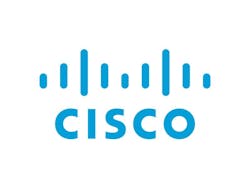Cisco chairman and CEO Chuck Robbins reported $13.6 billion in revenue for the company’s fiscal fourth quarter, down 10% year-over-year. Robbins also noted that the company’s gross margin—67.5%—is the highest the company has seen in 20 years and is boosted by the recently acquired cybersecurity subsidiary Splunk.
“We saw steady demand as we closed the year with total product order growth of 14% and growth of 6% excluding Splunk, indicating that the period of inventory digestion by our customers is now largely behind us as we expected,” said Robbins.
Robbins reported that all of Cisco’s geographical segments showed strength.
“Public sector demand was particularly strong worldwide, driven by federal spending in the U.S. and strength in APJC,” said Robbins. “Enterprise demand returned to strength in the quarter with solid performance in the Americas and EMEA and even stronger results in APJC. We signed several $100 million-plus transactions in the quarter with global enterprises who are leveraging the breadth of our technology platforms to modernize and automate their network operations and deploy next-generation machine learning and AI applications.”
According to Robbins, telco and cable customer demand remained muted, which he attributed to continued industry-wide pressure.
Product demand
Robbins said Cisco’s customers are focused on their next top priority technology investments, resulting in strengthening demand for the company’s products.
“Excluding Splunk, security product orders grew double digits, and collaboration product orders grew double digits,” said Robbins. “In our networking portfolio, data center switching also saw double-digit product order growth. Enterprise routing, campus switching, and wireless orders were also strong, with wireless orders greater than 1 million, up more than 20% year-over-year as customers look to enhance their office environments.”
Robbins also reported that efforts to capitalize on AI infrastructure opportunities are paying off for Cisco.
“We have now crossed $1 billion in AI orders with web scale customers to date,” he said, “with three of the top four hyperscalers deploying our Ethernet AI fabric and leveraging Cisco-validated designs for AI infrastructure. We expect an additional $1 billion of AI product orders in fiscal year 2025.”
Cisco is also implementing AI into its own services, enhancing productivity and the customer experience.
“We have a robust AI and automation framework that touches at least 50% of our service requests,” he said.
Improving order levels
Cisco CFO Scott Herren broke down the quarter’s results, reporting that total product revenue was $9.9 billion, down 15%, and services revenue was $3.8 billion, up 6%. Splunk contributed approximately $960 million in revenue for the quarter.
Revenue for Cisco’s largest product category, networking, was down 28% year-over-year. Security, including Splunk, was up 81% and up 6% when Splunk was excluded.
Herren also reported that Splunk bolstered annual reoccurring revenue (ARR), which was $29.6 billion at the end of the quarter, a 22% increase.
Total subscription revenue was $7.7 billion, up 17%, and total software revenue was $5.3 billion, up 15%. Product orders were up 14% year-over-year.
“Excluding Splunk, product orders were up 6% year-over-year,” said Scott, “indicating the period of inventory digestion by our customers is now largely behind us.”
Breaking down product orders geographically, Robbins reported that the Americas was up 15% year-over-year, EMEA was up 12%, and APJC was up 16%. For customer markets, Robbins said that the public sector was up 20% year-over-year, enterprise was up 13%, and service provider and cloud was up 5%.
Cisco ended Q4 with total cash, cash equivalents, and investments of $17.9 billion.
Discussing the full fiscal year, Robbins reported that fiscal 2024 was Cisco’s second strongest year on record, with revenues of $53.8 billion (compared to revenues of $57 billion in fiscal 2023).
“We executed well in Q4 and the fiscal year,” said Robbins. “We exited the year with order levels improving as customers largely completed the implementation of record Cisco product shipments. Further, we are realigning our expenses to better capture the opportunities ahead.”
Despite positive outlooks, Herren reported that Cisco plans for another round of layoffs, its second this year, which will affect approximately 7% of the company’s workforce.
Cisco expects revenue to be in the range of $13.65 billion to $13.85 billion in fiscal Q1 2025 and $55 billion to $56.2 billion in the full fiscal year.
For related articles, visit the Business Topic Center.
For more information on high-speed transmission systems and suppliers, visit the Lightwave Buyer’s Guide.
To stay abreast of fiber network deployments, subscribe to Lightwave’s Service Providers and Datacom/Data Center newsletters.
About the Author

Hayden Beeson
Hayden Beeson is a writer and editor with over seven years of experience in a variety of industries. Prior to joining Lightwave and Broadband Technology Report, he was the associate editor of Architectural SSL and LEDs Magazine.


